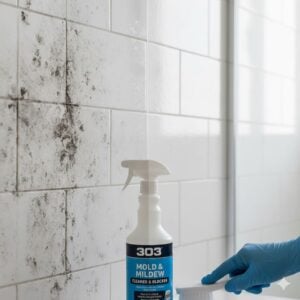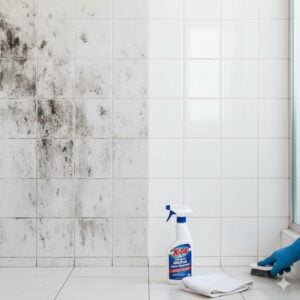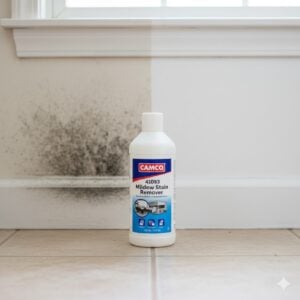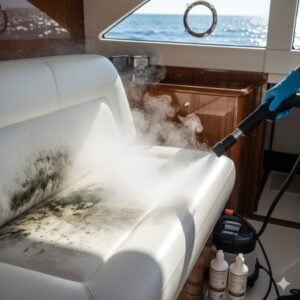Air pollution uae is a growing concern that affects millions of residents across the Emirates. Despite rapid modernization and strict environmental standards, the region’s unique climate and industrial activity make pollution control an ongoing challenge. People living in cities like Dubai, Abu Dhabi, and Sharjah often notice hazy skies, coughing after dust storms, or fine particles collecting on furniture inside their homes. Understanding what causes air pollution, when it peaks, and how to protect yourself indoors is essential to maintaining good health and comfort in the UAE’s urban environment. In this article, we’ll discuss the main sources of air pollution uae, the times when it tends to worsen, and practical ways to improve indoor air quality.
Table of Contents
ToggleWhat Causes Air Pollution UAE?
The causes of air pollution uae come from both human and natural factors. The UAE’s arid climate, heavy urbanization, and dependence on fossil fuels all contribute to the complexity of its air quality problems. Below are the most significant contributors:
1. Vehicle Emissions
One of the biggest sources of air pollution uae is road traffic. The country’s high car ownership rate and reliance on private vehicles generate large amounts of nitrogen oxides (NOx), carbon monoxide (CO), and particulate matter (PM2.5 and PM10). These pollutants come mainly from fuel combustion, especially during rush hours when traffic congestion is severe. Even though the UAE promotes electric vehicles and improved fuel standards, the sheer number of cars on the road continues to release exhaust gases that affect air quality. In major cities, emissions from vehicles often make up over half of the total measured pollution.
2. Industrial and Power Generation Emissions
Industries, factories, and power plants across the Emirates release pollutants such as sulfur dioxide (SO₂), nitrogen dioxide (NO₂), and volatile organic compounds (VOCs). These gases contribute to smog formation and respiratory problems. The UAE’s rapid industrial development means more energy is consumed every year, and even though cleaner technologies are being introduced, fossil fuel use still dominates. Power generation, particularly in older plants that rely on gas or oil, remains a key source of atmospheric pollution. Industrial clusters like Jebel Ali and Musaffah are among the areas most affected.
3. Construction and Dust
Continuous construction projects — from high-rise buildings to new infrastructure — contribute heavily to particulate pollution. Dust from excavation, demolition, and transport of construction materials often lingers in the air. Even though local laws require companies to suppress dust using water sprays and barriers, dry and windy conditions in the UAE make it difficult to fully contain. Residents living near active construction zones frequently experience increased coughing and dusty home interiors.
4. Desert Dust and Natural Events
Natural sources also play a major role in air pollution uae. The desert environment frequently produces dust storms, known locally as “shamal” winds, which can last several days. During these periods, visibility drops dramatically and air quality indices can exceed hazardous levels. Unlike industrial emissions, this form of pollution is almost impossible to control, as it comes from nature itself. The dust particles are extremely fine and can enter homes through small openings, worsening indoor air quality.
5. Marine and Aviation Emissions
The UAE’s strategic location as a global transport hub adds another layer to the pollution challenge. Ships entering ports such as Jebel Ali release sulfur and nitrogen compounds when their engines run on heavy fuel. Similarly, aircraft emissions from busy airports like Dubai International and Abu Dhabi International contribute to localized air quality deterioration. Though the aviation sector’s pollution footprint is relatively smaller compared to ground transport, its impact in densely populated zones is still significant.
When Air Pollution Peaks in the UAE
Air pollution levels in the UAE are not constant — they fluctuate throughout the year based on weather patterns, human activity, and environmental conditions. Knowing when these peaks occur can help you plan your outdoor routines and reduce exposure.
1. Summer Months (June to September)
During summer, temperatures soar and humidity levels rise. These conditions trap pollutants close to the ground through a process called thermal inversion, where hot air prevents cooler, polluted air from rising. As a result, exhaust fumes, dust, and industrial emissions accumulate in the lower atmosphere. This makes outdoor air feel thick, hazy, and difficult to breathe, especially in densely populated areas.
2. Dust Storm Season (March to May)
Spring often brings strong northwesterly winds that carry dust across the Arabian Peninsula. These storms can last for hours or days and drastically reduce visibility. The UAE’s air quality index (AQI) frequently spikes during this period, sometimes reaching “unhealthy” or “very unhealthy” levels. Sensitive groups like children and the elderly are advised to stay indoors during such times.
3. Rush Hour and Weekend Evenings
On a daily basis, pollution peaks during morning and evening rush hours when vehicle traffic is at its highest. Fridays and weekends often see additional pollution from leisure travel and increased energy consumption in malls and restaurants. The combination of heavy traffic and stagnant evening air can cause pollution to linger longer than usual.
Health Effects of Air Pollution UAE
Exposure to air pollution uae can lead to both short-term and long-term health effects. Short-term exposure often results in coughing, sore throat, irritated eyes, and fatigue. Long-term exposure, however, can increase the risk of asthma, bronchitis, and cardiovascular disease. Studies show that fine particulate matter (PM2.5) penetrates deep into the lungs and may even affect brain function over time. For people with pre-existing respiratory conditions, bad air quality days can cause severe flare-ups requiring medical attention.
Protecting Yourself Indoors
Indoor protection is one of the most effective ways to reduce exposure to air pollution in the UAE. Since people spend most of their time indoors, maintaining clean indoor air is critical to health and comfort. Here are some proven ways to protect yourself:
1. Use Air Purifiers
Air purifiers equipped with HEPA filters can remove up to 99% of airborne particles, including dust, pollen, and fine pollutants. In areas close to highways or construction zones, using air purifiers in living rooms and bedrooms makes a noticeable difference in breathing comfort. Regularly cleaning or replacing filters ensures their efficiency.
2. Maintain Air Conditioning Systems
AC ducts accumulate dust and pollutants over time, circulating them throughout your home if not cleaned properly. Professional duct cleaning helps reduce allergens and keeps air flowing cleanly. At Bio-On Cleaning Services, for instance, we often find heavy dust buildup even in relatively new homes — especially after dust storms. Regular AC servicing not only improves air quality but also reduces electricity bills by enhancing efficiency.
3. Seal Leaks and Gaps
Small gaps around windows and doors let polluted outdoor air enter. Sealing these areas helps maintain indoor air purity and keeps humidity in check. During high-pollution days, it’s best to keep windows closed and use ventilation systems with clean filters instead of relying on outdoor air exchange.
4. Add Indoor Plants
Certain indoor plants, such as snake plants, areca palms, and peace lilies, naturally absorb pollutants and improve air quality. While they don’t replace mechanical filtration, they contribute to a fresher environment and can slightly increase oxygen levels indoors.
5. Schedule Regular Deep Cleaning
Dust and fine particles settle on furniture, curtains, and carpets. Regular deep cleaning removes these pollutants before they resuspend in the air. At Bio-On Cleaning Services, we perform deep cleaning that targets hidden dust inside upholstery and hard-to-reach areas, using eco-friendly methods safe for children and pets. Clean interiors mean fewer triggers for allergies and respiratory irritation, especially during high-pollution seasons.
Government and Public Efforts to Tackle Air Pollution
The UAE government has implemented several initiatives to combat air pollution. The Ministry of Climate Change and Environment, along with local municipalities, operates air quality monitoring networks that track PM2.5, NO₂, and ozone levels across the country. Dubai’s Green Mobility Initiative encourages the adoption of electric vehicles, while Abu Dhabi’s Environment Vision 2030 sets long-term goals for emission reduction. Industries are also required to adopt best practices for emission control, including dust filtration and cleaner fuels. Public awareness campaigns encourage residents to report visible pollution and adopt sustainable habits.
Conclusion
Air pollution uae remains a challenge due to the combination of industrial growth, natural dust, and heavy vehicle use. Its impact varies across the Emirates, but the health risks are universal. Understanding the main sources, knowing when pollution peaks, and taking indoor protection steps can significantly reduce exposure. The UAE continues to advance its sustainability efforts, but real improvement depends on collective responsibility — from government policies to individual habits. For households and businesses that want to breathe cleaner air, Bio-On Cleaning Services offers specialized deep cleaning and duct sanitization to improve indoor air quality. Click the contact button on the right middle of this article to reach our experts and create a cleaner, healthier environment for your home or workspace.













